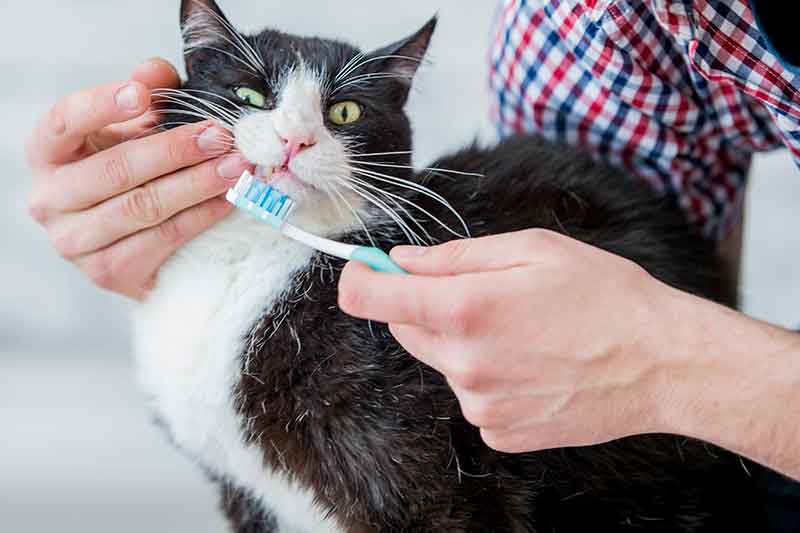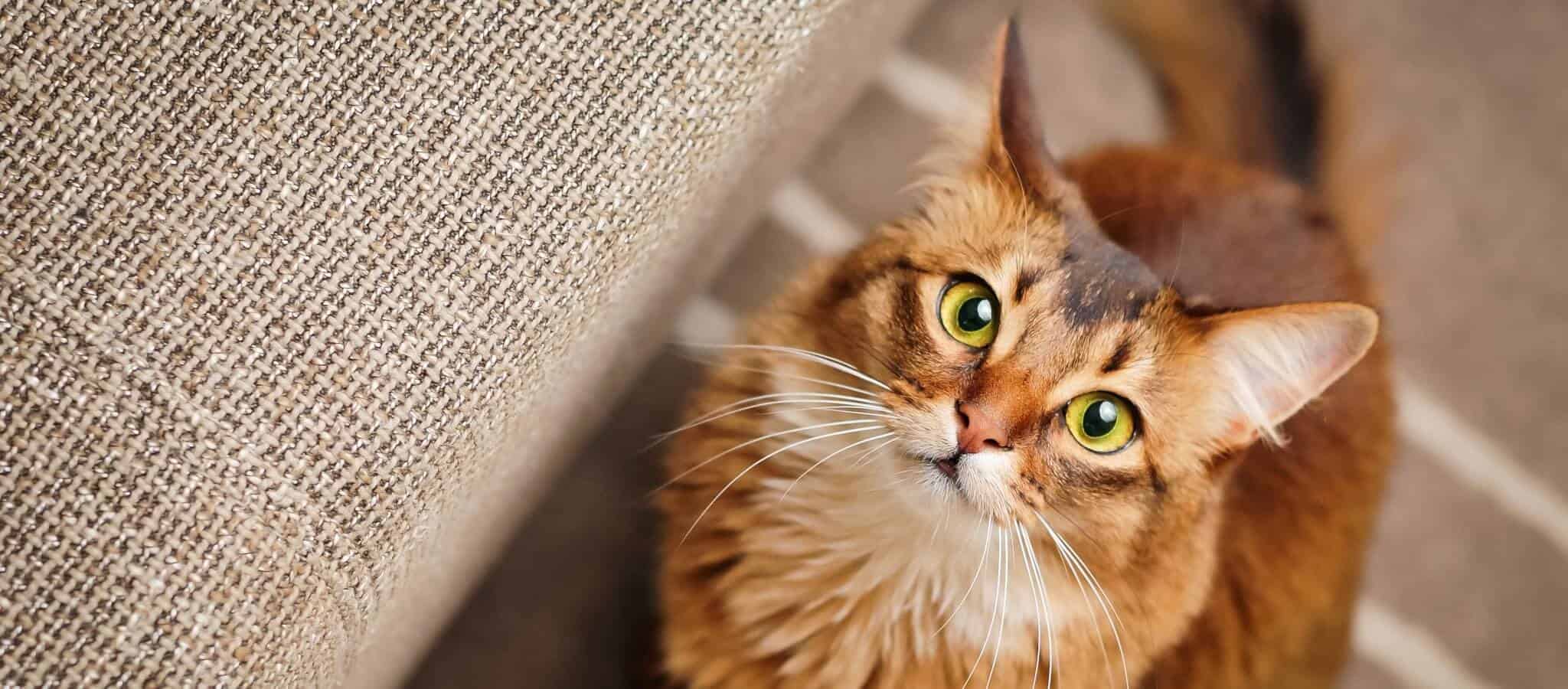
During your pet’s annual wellness exam, we always take time to check his or her mouth, gums, and teeth. This oral health exam is one of the most important and basic ways to keep your pet’s overall health good. It’s a little known fact that by the time pets are 4 years of age, over 85% of them have some form of dental disease. Luckily, this is entirely preventable.
At Clairmont Animal Hospital, we get a lot of questions about pet dental health, and so we thought we’d take this opportunity to answer some of these pressing concerns.
Your Pet Dental Health Questions Answered
Q: Why does my pet have bad breath? Isn’t “doggy breath” normal?
A: Many people believe that doggy breath is normal, but nothing could be farther from the truth! In fact, bad breath in pets is one of the first ways we notice that there is a real problem brewing in the mouth. Redness of the gums, drooling, and bleeding gums are also warning signs. Bad breath, caused by plaque and tartar buildup, means dental disease. And that’s a signal that your pet needs a dental cleaning, stat.
Q: What causes pet dental health problems?
A: Dental disease starts when plaque sticks to the teeth. Within days, minerals in the saliva cause plaque to harden into tartar. If left to remain, tartar above and below the gum line causes gingivitis (inflammation) and further accumulation of bacteria, leading to periodontal disease. This can cause tooth loss or fracture, a painful mouth, infection, and bleeding and sore gums.
Dental disease doesn’t just affect your pet’s mouth, though. Bacteria from infected teeth can travel to your pet’s bloodstream and cause damage to internal organs such as heart, kidney and liver.
Q: Does my pet need a dental cleaning? Won’t a dental chew clean his teeth?
Some dental chews can be helpful at reducing plaque, but they won’t take the place of brushing and regular annual dental cleanings. Here’s why.
A: During a dental cleaning, your pet will be under anesthesia, in order to allow us to completely and thoroughly access each tooth and the gums. Cleaning away plaque and tartar under the gum line is especially important, and we’ll be able to see any changes under the gum line with digital dental x-rays. This is important so we can see any disease that won’t be visible to the eye, and we can recommend and perform a tooth extraction if necessary. After your pet’s dental cleaning, dental chews (and brushing) can help keep teeth cleaner so that the next dental cleaning is easier and less time consuming.
Q: How do I brush my pet’s teeth?
A: Brushing your cat or dog’s teeth may seem daunting, but it’s easier than you think! Of course, it’s preferable to start when they are young, as puppies and kittens can get acclimated to this process more quickly than an adult pet. However, there are some basic steps to follow regardless of your pet’s age:
- Begin by gently rubbing your pet’s teeth with a soft gauze pad each day.
- Work your way up to a pet toothbrush. You can use a pet toothpaste which has a flavor your pet likes (poultry, for example). Don’t use human toothpaste.
- Focus on the gumline
- Try starting with 30 seconds of brushing on the outside of the teeth several times a week.
- Ask us if you have more questions, and remember to offer lots of praise and reward!
These are but a few of the questions we get about pet dental health. If you have other specific questions please don’t hesitate to give us a call.

